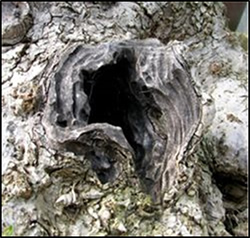Carving Techniques
A significant feature of many bonsai is the amount of deadwood that forms part of the tree’s appearance. Deadwood in a bonsai context takes many different forms that mimic trees in nature. This deadwood might be nothing more than branches that have been partly removed and the remains having had its bark removed giving the appearance of the stub of a dead branch (jin). In other instances, part of the trunk is devoid of bark giving the impression of the tree having been struck by lightning (sharamiki); and in some cases the trunk may even be hollowed (uro). In the latter instance, this is a natural phenomenon on conifers or deciduous trees where natural rot has removed part of the tree’s heartwood.



The method you choose to approach the carving on a tree to give the effect of deadwood very much depends on the tree itself. It is not necessarily an essential component of the tree’s appearance but when put into practice, it is the tree itself that will determine what form the deadwood might take. In some cases, a deadwood effect could be totally inappropriate – quite simply, the style of the tree and certain features such as the quality of the bark would be lost through carving.